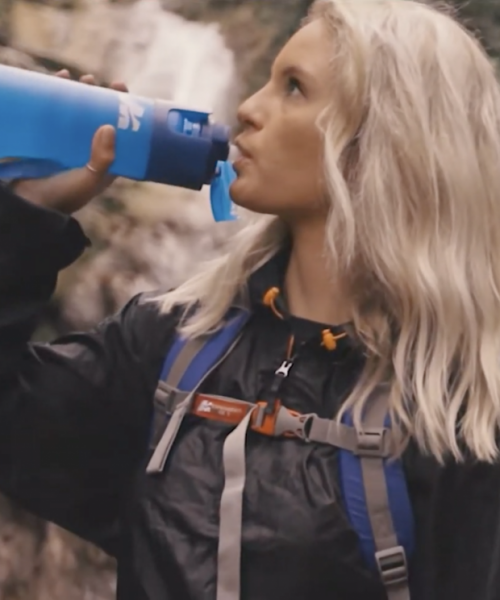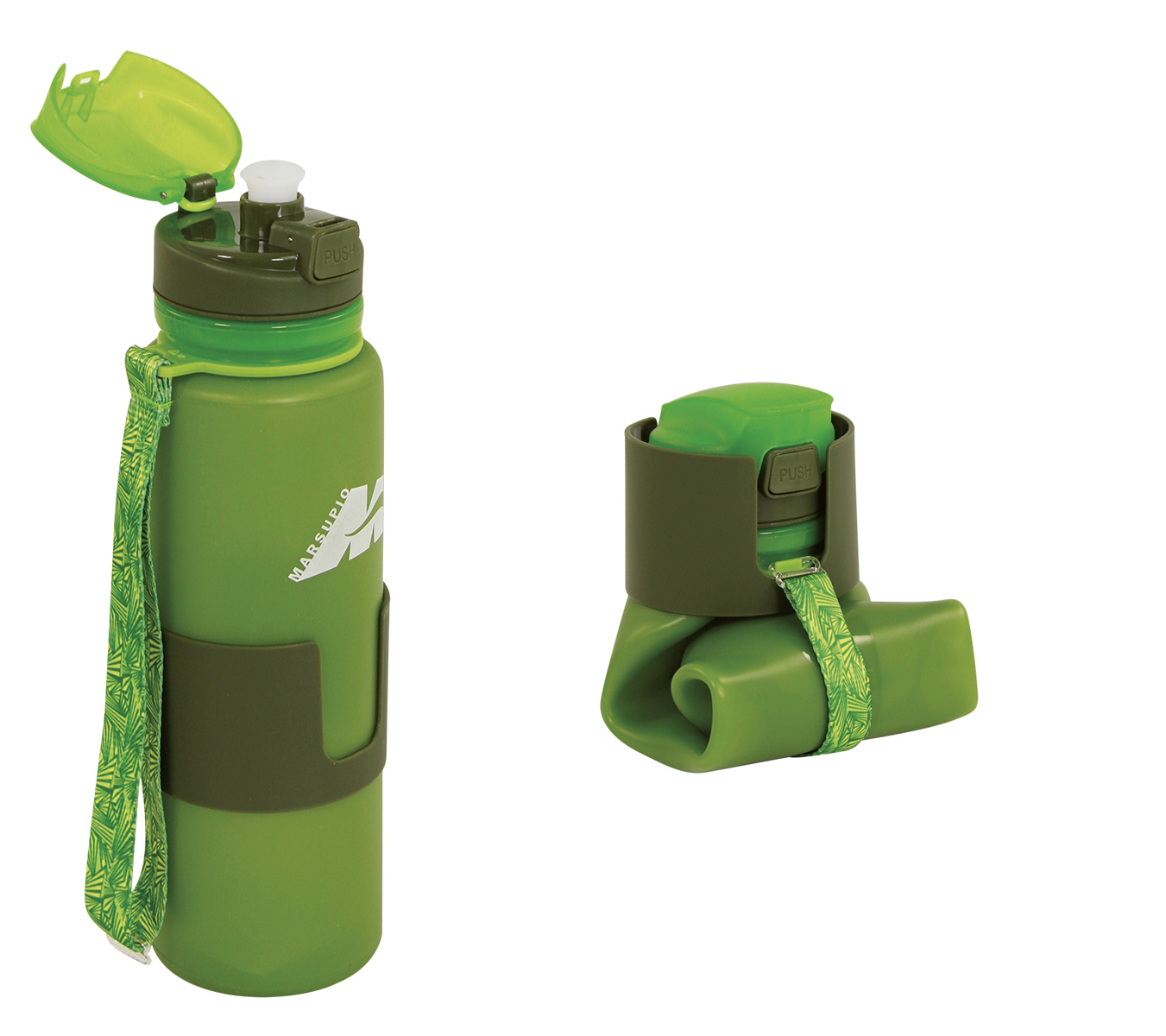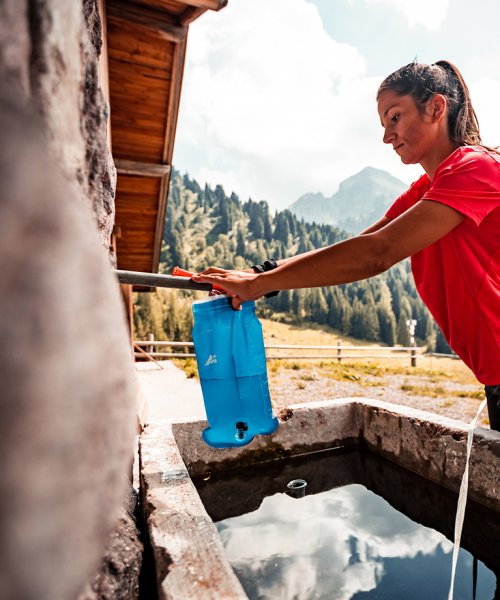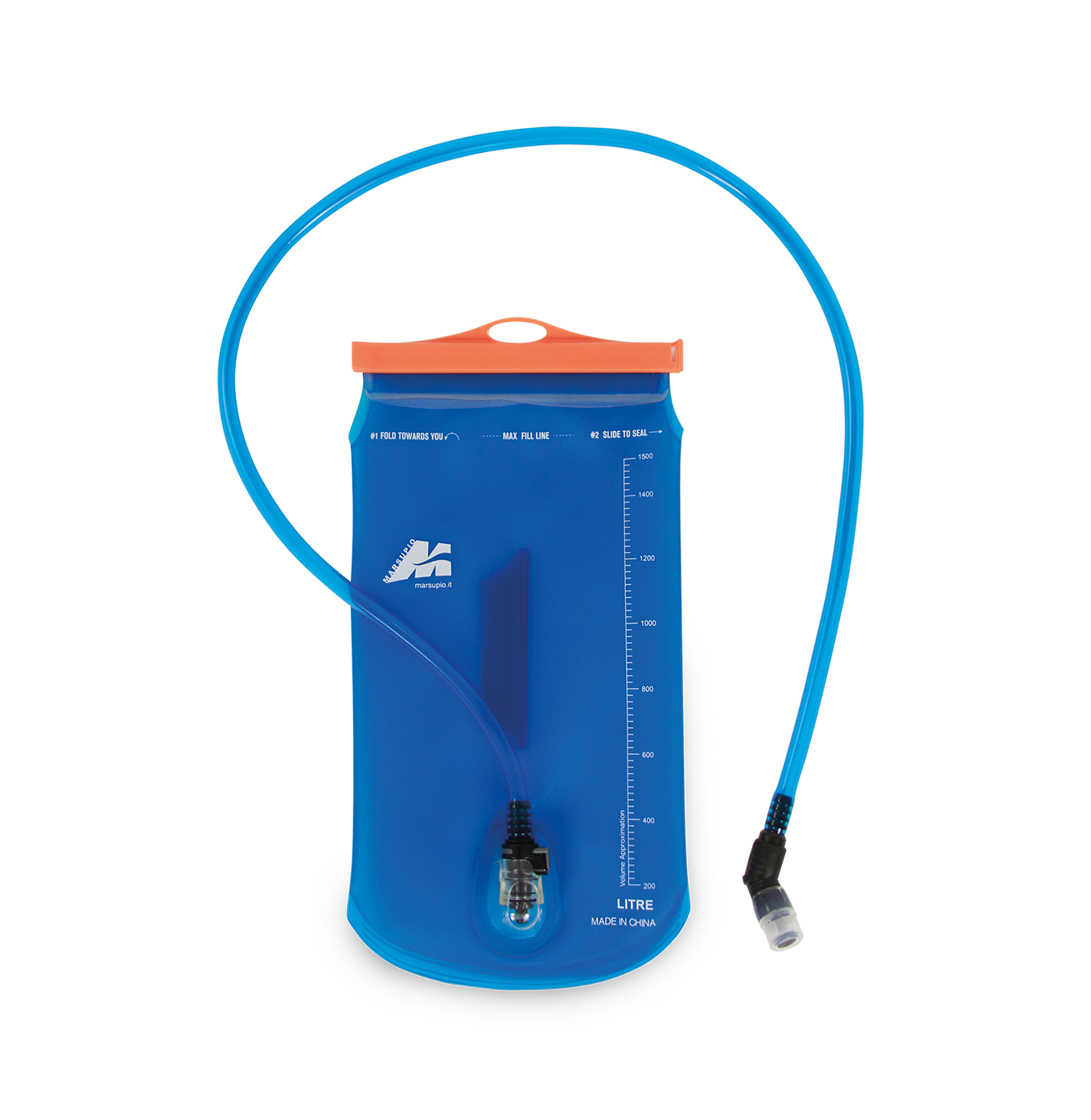How to wash reusable water bottles
They’re colourful, practical and sustainable. Made of stainless steel or silicone, a reusable bottle is definitely a must-have and eco-friendly object.

What’s the best way to care for our reusable bottles to keep them properly clean?
If not washed properly, they are in fact the ideal environment for the formation of bacteria and microscopic moulds, which cause bad odour and are harmful to health.

Water bottle designed in platinum silicone, a material which makes it flexible, odourless and easy to close. The unique feature of this bottle is that once empty, it can be rolled up so that it occupies minimal space until it needs to be used again.
Have a look at our short but useful guide which describes
how to wash reusable water bottles:
- Rinsing is not enough!
A quick rinse is not good enough. Bottles should be washed after every use with abundant cold running water and left to dry by placing them upside-down. To prevent bad odours, you can wash your bottle with some washing up liquid and a brush, or in the dishwasher. - Follow some precautions if using the dishwasher
You can occasionally use the dishwasher for your reusable bottles, to blitz them with a hi-temp wash. However, there are some things to bear in mind. The dishwasher is only suitable for stainless steel bottles, not for silicone bottles. Also, the dishwasher is not always effective, as the narrow neck of the bottle may not allow for complete cleaning. So to sum up, washing in a dishwasher should be alternated with the other methods described below. - Sodium bicarbonate
This is one of the simplest and most popular cleaners; it’s very effective at combatting the problem of bad odours. Fill the bottle with hot water with a spoonful of sodium bicarbonate dissolved in it, then close the bottle and shake well. Let it stand overnight, then rinse carefully. If you can still detect a smell, repeat the treatment. - Apple vinegar
Fill three-quarters of the bottle with a solution made of cold water and apple vinegar, shake well, and let it stand for 12 hours. Then rinse with cold water. - Wash all parts of the bottle
While washing, don’t forget to wash the lid and the rim around the neck of the bottle. You can do this with a sponge dampened with soap and water, or with a toothbrush if the dirt is obstinate or difficult to reach. - Proper storage
If you don’t plan to use your bottle for a while, after washing and drying it well, you can store it closed with a cup of pure ethyl alcohol inside (the one used for cakes), which will ensure the bottle remains uncontaminated and prevent the growth of bacteria. Before using it again, it’s important to wash it thoroughly.
A few more tips for using a hydration bag

Hydration bags are a very handy accessory, greatly appreciated especially by those people who do more dynamic sports, such as running, cycling or ski mountaineering, because they allow you to stay hydrated without having to stop. Marsupio’s entire range of technical backpacks are compatible with hydration systems, meaning that hydration bags can be used for any outdoor activity.
As for reusable water bottles, constant care will ensure maximum cleanliness and ensure a longer life.

Soft and flexible 1.5 liter hydration bag. Thanks to the large top opening with envelope closure, it is easily washable. The quick release closure system allows easy removal of the tube from the bag.
Here are some tips:
- After each use, wash your hydration bag with soap and water. After rinsing well, it’s very important to let it dry thoroughly. The easiest way is to hang it upside down, without the lid, in a well-ventilated place.
- The tube and bite valve should also be washed carefully and left to dry.
To empty the tube of any residual drops, you can spin it by holding it at one end, or simply blow air into it. - For deep cleaning, or to eliminate bad smells, you can soak it in hot (not boiling) water with a couple of tablespoons of sodium bicarbonate or white vinegar, and then let it stand for about half an hour.
- Store your hydration bag dry, upside down and open. The tube should also be removed to ensure air can circulate through it freely.

